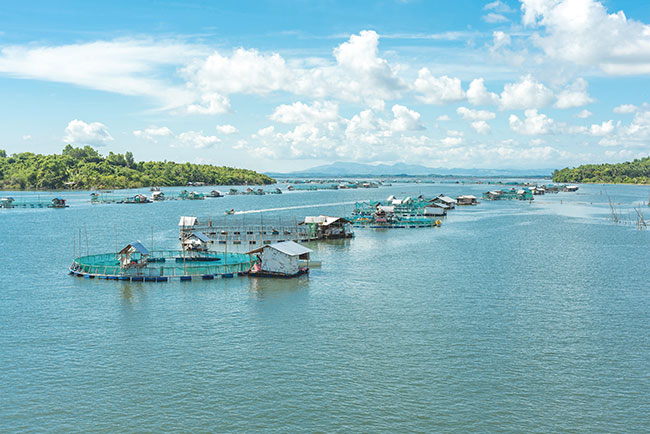
Features
Breeding
5,000 fish cages to take Philippine milkfish industry to next level
July 12, 2023 By Ruby Gonzalez
 Photo: © Mdv Edwards / Adobe Stock
Photo: © Mdv Edwards / Adobe Stock Five thousand fish cages are what it takes to further push the Philippine milkfish industry, said Manny Piñol, a former Philippine agriculture chief. This recent social media post once again reignited the topic on further improving the Philippine milkfish industry.
Each of the circular fish cages, made of fiberglass and PVC pipes, could accommodate 80,000 milkfish fingerlings. Total production yield of the 5,000 fish cages is an estimated 100,000 metric tons. Reaching this point necessitates a holistic approach – addressing the perennial shortage of Philippine-produced fry, funding support by government and government financing institutions, affordable aquafeeds and having a ready market.
Similar points were stressed in the Philippine Milkfish Industry Roadmap 2021-2040, a government-private sector collaboration.
Milkfish a popular food fish in the Philippines. However, production is perennially hounded by lack of locally produced fry. Heavy importation, especially from Indonesia, is the industry stop-gap. Imported fry are priced lower but have higher mortality rates.
The roadmap cited one of the biggest threats by dependence on Indo-fry: “If Indonesia will stop fry exportation, they can solely dominate in exporting marketable milkfish.”
There is an availability of farms breeding milkfish in the Philippines but broodstock supply continues to be inadequate. Technology and R&D on milkfish breeding is available. Investment interests in establishing hatchery/nursery facilities, however, are deterred by high operations costs, particularly when it comes to cost of electricity.
Among the factors identified for pushing cost of Philippine fry is the “unabated price increase of feeds and other farm inputs.” The unregulated importation of milkfish fry, coupled with the cost factor, makes it a popular choice for a lot of farmers.
Wild-caught fry contribute to the Philippine inventory. But concerns have been raised due to absence of folding facilities.
Piñol’s push for fish cage might be practical given the growing scarcity of inland and coastal areas to sustain the industry’s physical expansion. But, critics cite its negative environmental and ecological impact, mostly traced to the excess fish feeds falling on the seabed.
Advocates say that multi-trophic aquaculture may minimize the impact. Piñol visited a fish cage was stocked with milkfish fingerlings, rabbitfish and spadefish. The last two animals were bottom dwellers that eat excess feed landing on cage bottom.
Print this page
Advertisement
- Effects of hard water precipitates on early life stage brook trout
- Shrimp Summit to offer special rate to Vietnam-based attendees





